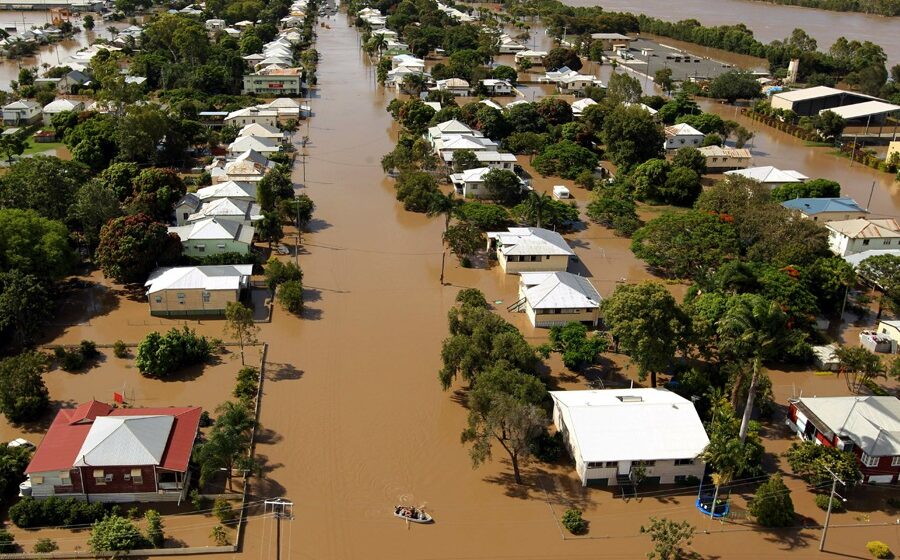Thousands of people across New South Wales are grappling with flooding as evacuation orders remain in place for large swathes of Sydney and the waters continue to rise in regional areas.
The NSW State Emergency Service (SES) is helping 2,000 people to evacuate and warns there will likely be more evacuations in low-lying areas of Sydney’s west and north-west.
So far about 18,000 people have been evacuated from their homes: 3,000 people in Western Sydney, and 15,000 of which were in the Mid-North Coast.
Evacuation orders were issued in Western Sydney and the foot of the Blue Mountains, affecting suburbs around Penrith and downstream to North Richmond as the Hawkesbury-Nepean River peaks.
Among them, western parts of Penrith, Jamisontown, Mulgoa, North Richmond, Hawkesbury Valley around Agnes Banks, Freemans Reach, Cornwallis and Pitt Town North.
The Bureau of Meteorology (BOM) said flooding in parts of the Hawkesbury-Nepean River system, which almost encircles Sydney, has reached levels not seen since 1961.
Since the heavy rain began, 450 gigalitres of water a day have been released from the Warragamba Dam — comparable to the contents of Sydney Harbour, which is about 500 gigalitres.
NSW SES Deputy Commissioner Daniel Austin said there had been over 2,000 calls for help in the last 24 hours.
“We have a pretty wide area of focus at the moment, all the way from the Mid-North Coast right the way down into the Sydney Metro area, and across the Mid-North Coast today we are expecting to see the return of some heavy rainfall in locations,” he said.
NSW SES Commander Michael Ward said there had been more than 300 flood rescues, with over 1,000 people so far rescued.
He acknowledged that many flood-affected people had been left in the dark about what to do.
“We have a number of concerns for welfare, so we’re working through those,” he said.
“What obviously happens is that everyone relies on the mobile phone. And when they haven’t had power for two days, they stop working.”
Essential Energy said about 5,500 customers in NSW were without power, mainly in the Mid-North Coast around Port Macquarie, Taree and Kempsey areas.
“We’ve got choppers in the air scoping for damage. We already know where a lot of the damage is, and it’s just a matter of being able to get in there to make the repairs,” general manager Luke Jenner said.
More rain on the way
The day’s forecast is expected to bring more rain as a deepening trough feeds more moisture across central Australia towards the east.
Sydney is expected to receive between 40 and 70 millimetres of rain today, while parts of the east coast will see in excess of 100mm over the next four days.
Residents in McGraths Hill, South Windsor and the Windsor CBD, Mulgrave and Vineyard, all in Sydney’s north-west, have been told to prepare to evacuate as floodwaters continue to rise.
Elsewhere, more than 200mm of rain has fallen in some parts of northern NSW, with the heaviest falls around Kempsey and Coffs Harbour on the state’s Mid-North Coast.
A flood evacuation order has been issued for the Kempsey CBD and authorities are warning the town’s levee could be inundated after 177mm of rain fell since 9:00am on Sunday.
Port Macquarie resident Matt Morris told the ABC watching the flood waters come in was like seeing an “inland sea”.
“Most of the low-lying areas, we saw water, it was like an inland sea,” he said.
“All that area that it came back down through had been hit by the fires at the beginning of the year.”
Mr Morris said the water seemed to be flowing a lot harder than he had witnessed during a Kempsey flood in 2017.
“When we went through Macksville, all the old Pacific Highway was closed and houses [were] completely under.”
The Insurance Council of Australia declared large parts of New South Wales an “insurance catastrophe” because of the widespread storms and floods.
The move means that insurance claims from affected people and businesses will be fast tracked.
The council says that it has received more than 5,000 damage claims over the past few days.
Schools closed, workers urged to stay home
Over 130 public, independent and Catholic schools are closed today and SES Commissioner Carlene York said people should seriously consider working from home.
“Your office or area of work may be open but you may not be able to safely get to that and we do not want people on the roads,” she said.
Mayor of Penrith, in Sydney’s west, Karen McKeown said the Hawkesbury-Nepean River peaked at 10.05 m overnight and was now receding.
“Unfortunately, those waters are now flowing down towards Richmond and Windsor, so it’s still some scary times ahead,” she said.
“Do not drive through any water at all. You may not know the depth. And it is very, very dangerous.”
Disaster recovery assistance has been extended to a further 18 local government areas, including Blacktown, Blue Mountains, Hornsby, Northern Beaches and Penrith.
Yesterday, NSW Premier Gladys Berejiklian described the Mid-North Coast’s flooding as “one-in-100-year event” and warned the next few days would be difficult for her state.
The Premier said 38 areas have been declared natural disaster zones and the situation is still evolving.
But the BOM’s Mr Morgan said conditions were expected to ease across the state on Wednesday as the trough moved south.
“The south coast will probably see the heaviest rain on Tuesday, and then on Wednesday, we will see a few lingering showers along the coast, but nothing much like what we have seen over the past few days.”



